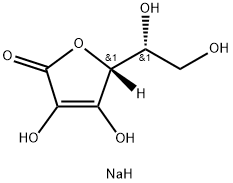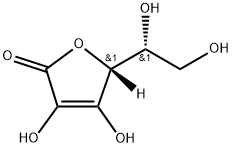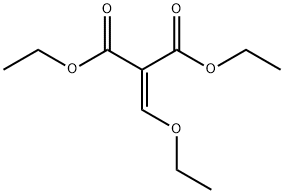PRODUCT Properties
| Melting point: | 154-164°C (decomposes) |
| alpha | 97 º (c=1,DMF) |
| Density | 1.702[at 20℃] |
| vapor pressure | 0Pa at 25℃ |
| refractive index | 97 ° (C=10, H2O) |
| storage temp. | Sealed in dry,Room Temperature |
| solubility | Soluble in DMSO |
| form | solid |
| color | Light yellow to yellow |
| Odor | at 100.00?%. odorless |
| Water Solubility | 146g/L at 20℃ |
| InChI | InChI=1/C6H8O6.Na.H/c7-1-2(8)5-3(9)4(10)6(11)12-5;;/h2,5,7-10H,1H2;;/t2-,5-;;/s3 |
| InChIKey | RALCFXKKGFGHCA-DJDVHRGRNA-N |
| SMILES | [C@@H]([C@@]1([H])OC(=O)C(O)=C1O)(O)CO.[NaH] |&1:0,1,r| |
| LogP | -3.29 |
| CAS DataBase Reference | 6381-77-7(CAS DataBase Reference) |
| EPA Substance Registry System | Sodium erythorbate (6381-77-7) |
Description and Uses
Sodium Erythorbate is an antioxidant that is the sodium salt of erythorbic acid. in the dry crystal state it is nonreactive, but in water solution it readily reacts with atmospheric oxygen and other oxidizing agents, a property that makes it valuable as an antioxidant. during preparation, a minimal amount of air should be incorporated and it should be stored at a cool temperature. it has a solubility of 15 g in 100 ml of water at 25°c. on a comparative basis, 1.09 parts of sodium erythorbate are equivalent to 1 part of sodium ascorbate; 1.23 parts of sodium erythorbate are equivalent to 1 part erythorbic acid. it functions to control oxidative color and flavor deterioration in a variety of foods. in meat curing, it controls and accelerates the nitrite curing reaction and maintains the color brightness. it is used in frankfurters, bologna, and cured meats and is occasionally used in beverages, baked goods, and potato salad. it is also termed sodium isoascorbate.
Safety
| Symbol(GHS) |  GHS07 |
| Signal word | Warning |
| Hazard statements | H320 |
| Precautionary statements | P264-P305+P351+P338+P337+P313 |
| RTECS | MP8910000 |
| HS Code | 2918.29.7500 |
| Hazardous Substances Data | 6381-77-7(Hazardous Substances Data) |





